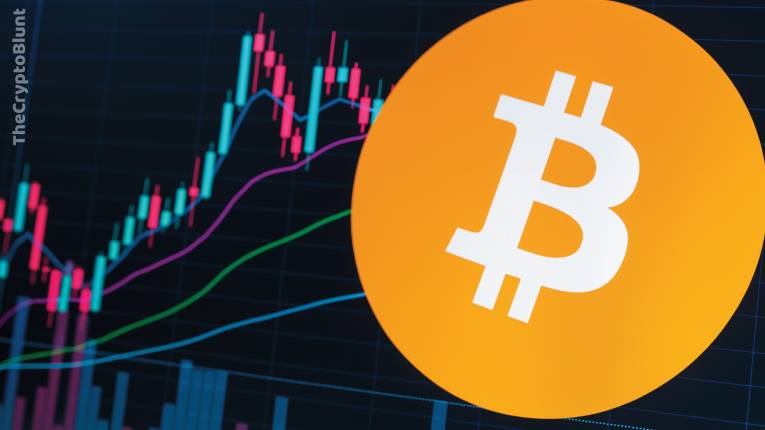In the vast and often perplexing world of digital currencies, one name stands out as the pioneer, the bedrock, and often, the entry point for millions: Bitcoin. Conceived in the aftermath of a global financial crisis, Bitcoin emerged not just as a new form of money but as a radical idea for a financial system free from central control, intermediaries, and traditional banking institutions.
For many, Bitcoin remains shrouded in mystery, seen as either a speculative investment, a technological enigma, or even a fleeting trend. However, its influence has extended far beyond finance, sparking a global movement toward decentralization and digital ownership. This comprehensive guide will take you on a journey through Bitcoin’s origins, explore the enigma of its creator, detail its practical uses today, and peer into its potential future. By the end, you’ll have a clear understanding of why Bitcoin isn’t just a digital coin, but a revolutionary technology with the potential to reshape our financial landscape.
The Dawn of a Digital Revolution: What Exactly is Bitcoin?
At its core, Bitcoin (BTC) is a decentralized digital currency, or cryptocurrency, designed to operate without the need for a central bank or single administrator. It enables peer-to-peer transactions that are verified by network nodes through cryptography and recorded in a public distributed ledger called a blockchain.
Let’s unpack these fundamental concepts to truly grasp Bitcoin’s essence:
Decentralization: This is the bedrock principle of Bitcoin. Unlike traditional fiat currencies (like the Indian Rupee or US Dollar), which are issued and controlled by central banks, Bitcoin has no central authority. Its network is maintained by a global collection of computers (nodes) that independently verify and record transactions. This means no single entity – no government, no bank, no corporation – can control, censor, or manipulate the Bitcoin supply or its transactions. This distributed control makes it incredibly robust and resistant to censorship.
Cryptocurrency: A cryptocurrency is a digital or virtual currency that uses cryptography for security. Bitcoin was the first, and remains the largest and most well-known, cryptocurrency. Cryptography ensures the integrity and security of transactions and controls the creation of new units of the currency.
Blockchain: Imagine a vast, continuously growing digital ledger or record book that is public and immutable. That’s the blockchain. Every Bitcoin transaction is bundled into a “block,” and once a block is verified and added to the chain, it’s permanently linked to the previous blocks using complex cryptographic proofs. This creates a chronological, transparent, and tamper-proof record of every Bitcoin transaction ever made, accessible to anyone. The “chain” metaphor refers to these blocks being cryptographically linked, creating an unbreakable history.
Mining: This is the process by which new Bitcoins are created and transactions are verified and added to the blockchain. “Miners” are powerful computers (or networks of computers) that compete to solve complex mathematical puzzles. The first miner to solve the puzzle gets to add the next block of transactions to the blockchain and is rewarded with newly minted Bitcoins (the “block reward”) plus transaction fees. This “Proof-of-Work” (PoW) mechanism secures the network, ensures the integrity of transactions, and controls the supply of new Bitcoins.
Peer-to-Peer (P2P): Bitcoin transactions occur directly between users, without the need for an intermediary like a bank. If you send Bitcoin to a friend, it goes directly from your Bitcoin wallet to theirs, verified by the decentralized network. This cuts down on fees, speeds up international transfers, and eliminates the need to trust a third party.
Fixed Supply: One of Bitcoin’s most defining characteristics is its scarcity. There will only ever be a maximum of 21 million Bitcoins that can be mined. This hard cap is embedded in its code, making Bitcoin a deflationary asset (unlike fiat currencies, which can be printed indefinitely, leading to inflation). This scarcity is often compared to precious metals like gold, earning Bitcoin the moniker “digital gold.”
Divisibility: While 21 million Bitcoins might sound small, each Bitcoin is divisible down to eight decimal places, meaning the smallest unit is 0.00000001 BTC. This smallest unit is called a Satoshi (named after Bitcoin’s anonymous creator). This divisibility ensures Bitcoin can be used for micro-transactions.
In essence, Bitcoin is a digital form of cash that is secure, transparent, censorship-resistant, and finite.
The Shadowy Figure: Who is Satoshi Nakamoto?
The story of Bitcoin’s birth is inextricably linked to one of the greatest mysteries of the digital age: the identity of Satoshi Nakamoto. This pseudonymous individual or group published the Bitcoin white paper in October 2008 and released the first Bitcoin software in January 2009, effectively launching the network. After interacting with early developers for a couple of years, Nakamoto famously disappeared from the public eye in mid-2010, leaving the project to the community.
The Enigma of Identity
To this day, Satoshi Nakamoto’s true identity remains unknown. Numerous theories and investigations have attempted to unmask the creator, but none have yielded definitive proof. Here are some of the most prominent aspects of the mystery:
Pseudonymity: The name “Satoshi Nakamoto” itself sounds Japanese, leading some to speculate about a Japanese origin. However, Nakamoto’s perfect English in forum posts and the use of British English spellings (e.g., “colour,” “grey”) have led others to believe the person or group is likely from a Commonwealth country.
Technical Prowess: The Bitcoin white paper is a masterclass in cryptography, computer science, and economics, showcasing an unparalleled depth of knowledge across these fields. The code for the initial Bitcoin client was also exceptionally well-written, leading many to believe it was the work of a highly skilled individual or a small, cohesive team.
- Privacy and Principles: Nakamoto’s decision to remain anonymous is often seen as a reflection of Bitcoin’s core principles of decentralization and privacy. By not attaching a personal identity to the project, Nakamoto ensured that Bitcoin could thrive as an independent, leaderless system, free from the influence of any single individual or central authority.
- Candidate Theories: Over the years, many individuals have been speculated to be Satoshi Nakamoto, or part of a group:
Hal Finney: A renowned cryptographer and the first person to receive a Bitcoin transaction from Nakamoto. He was an early supporter and close collaborator.
Nick Szabo: Another prominent cryptographer who had developed a concept called “bit gold” years before Bitcoin, which shared many similarities.
Wei Dai: Creator of “b-money,” an earlier proposal for an anonymous, distributed electronic cash system.
Craig Wright: An Australian computer scientist who publicly claimed to be Satoshi Nakamoto but failed to provide convincing cryptographic proof. His claims are widely dismissed by the crypto community.
Dorian Nakamoto: A Japanese-American engineer who was mistakenly identified by Newsweek in 2014, leading to a media frenzy, but he denied involvement.
Despite the relentless speculation, Satoshi Nakamoto has never returned to claim credit, or move the vast trove of early Bitcoins believed to belong to him (estimated to be around one million BTC). The enduring mystery only adds to the mystique and decentralized ethos of Bitcoin itself. The focus remains on the technology and the network, not on its human origin.
A Brief History: Key Milestones in Bitcoin’s Journey
Bitcoin’s path from a niche tech experiment to a global financial asset has been anything but smooth. It’s a story of innovation, adoption, major price swings, and relentless evolution.
- October 31, 2008: The Bitcoin white paper, “Bitcoin: A Peer-to-Peer Electronic Cash System,” is published by Satoshi Nakamoto.
- January 3, 2009: The Bitcoin network officially begins with the mining of the “genesis block” (Block 0). The first 50 Bitcoins are created.
- January 12, 2009: The first Bitcoin transaction occurs between Satoshi Nakamoto and Hal Finney.
- May 22, 2010: Bitcoin Pizza Day: Laszlo Hanyecz famously pays 10,000 BTC for two pizzas, marking the first real-world transaction with Bitcoin. At the time, 10,000 BTC was worth around $41. Today, it would be worth hundreds of millions of dollars.
- February 9, 2011: Bitcoin reaches parity with the US Dollar, trading at $1 per BTC.
- November 28, 2012: First Halving: The block reward for miners is cut in half for the first time, from 50 BTC to 25 BTC. This programmed event occurs roughly every four years.
- 2013: Bitcoin’s price surges, briefly crossing $1,000. It gains more mainstream attention.
- February 2014: Mt. Gox Collapse: Mt. Gox, then the largest Bitcoin exchange, collapses amid allegations of fraud and the loss of hundreds of thousands of Bitcoins. This event causes a significant price drop and sets back public trust, highlighting the risks of centralized exchanges.
- July 9, 2016: Second Halving: The block reward is reduced from 25 BTC to 12.5 BTC.
- December 2017: Peak of the First Major Bull Run: Bitcoin’s price reaches nearly $20,000, attracting widespread media and institutional attention. This is followed by the “crypto winter” of 2018.
- May 11, 2020: Third Halving: The block reward decreases from 12.5 BTC to 6.25 BTC.
- 2021: Institutional Adoption and New All-Time Highs: Major companies like Tesla and MicroStrategy add Bitcoin to their balance sheets. El Salvador becomes the first country to adopt Bitcoin as legal tender. Bitcoin reaches new all-time highs, nearing $69,000.
- 2022: A bear market, driven by macroeconomic factors (inflation, interest rate hikes) and the collapse of major crypto firms (Terra/Luna, FTX), sees Bitcoin’s price drop significantly.
- 2023-2024: Recovery and ETF Approval: Bitcoin gradually recovers. A monumental moment occurs in January 2024 with the approval of Spot Bitcoin Exchange-Traded Funds (ETFs) in the United States. This provides traditional investors with a regulated and accessible way to gain exposure to Bitcoin, leading to significant inflows of capital.
- April 20, 2024: Fourth Halving: The block reward is reduced from 6.25 BTC to 3.125 BTC.
- December 5, 2024: Bitcoin breaches $100,000 for the first time, signaling growing mainstream acceptance and institutional confidence.
- Early 2025 (Current Period): Bitcoin continues to consolidate its position as a major asset, with ongoing discussions around regulation, adoption in emerging markets, and its role as a hedge against global economic instability.















